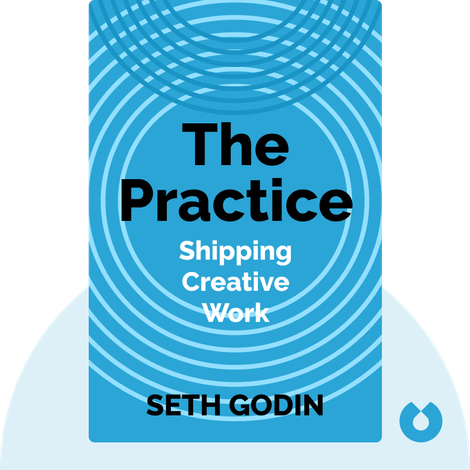“Leadership is the art of giving people a platform for spreading ideas that work.”
— Seth Godin
THE ART OF LEADERSHIP
Ideas Need Platforms
Leaders Build Stages, Not Thrones, For Collective Genius
Your job is to hand out microphones before you order megaphones. People aren’t waiting for another boss; they’re waiting for a stage that says, “We see you.” When the room notices the new spotlight, ideas climb onto it of their own accord, proud and wobbly like kids at a science fair.
Platforms change the math. Authority compounds because the crowd does the talking, not the spreadsheet. You become a curator, a coach, a concierge, fewer commands, more connective tissue. Instead of shipping one big concept each quarter, the Team ships a hundred micro‑experiments each week. A few stick, most teach, all advertise that contribution is welcome.
Here’s the rub: if you keep the mic too long, feedback squeals and the audience retreats. Give it away daily. Applaud the shy volunteer. Publish the small win. Soon, the room becomes its engine, humming without you at its center. That’s leadership: designing a system where absence feels like trust, not abandonment, inviting ideas to dance freely.
Give away one spotlight today, applaud a peer’s idea, and watch collective momentum accelerate for everyone.
COMMERCIAL CONSTRUCTION
Hydrogen Steel Mill Shakes Texas
Groundbreaking launches world’s first zero-carbon steel micro-mill near Dallas today
Excavators chewed up Ellis County pasture Wednesday as Aurora Steel, Toyota Tsusho, and Nucor executives kicked off construction of Lone Star H2 Micro‑Mill, a $740 million complex outside Waxahachie beside the BNSF mainline. Governor Greg Abbott called the project “next‑generation reshoring,” noting that sixty percent of American rebar still arrives by ship.
The mill will pair an electric arc furnace with HySustain direct‑reduced iron modules fed by on‑site electrolyzers powered by the nearby 250‑megawatt Roscoe solar farm, eliminating natural‑gas burners and slashing scope‑one emissions by ninety‑five percent. Waste heat powers an organic Rankine turbine, while rainwater ponds supply quench circuits, aiming for LEED Gold and ResponsibleSteel certification.
General contractor Austin Industries forecasts 850 tradespeople at peak, with 20 percent of them being apprentices from Dallas College. Once the bars roll in early 2028, Lone Star H2 expects to create 420 full-time jobs, averaging $78,000, and produce 650,000 tons of rebar, enough to support every highway project announced this biennium. Economists predict a $1.4 billion decade-long ripple effect across logistics, hydrogen supply, and manufacturing clusters along Interstate 35.
INFRASTRUCTURE INDUSTRY
Chicago’s Red Line Southward Soars
Ground Breaks On CTA Red Line South Extension To 130th
Backhoes cut into vacant lots beside 95th Street Friday morning as Chicago Transit Authority officials, union leaders, and cheering South Side residents launched the long‑anticipated Red Line Extension, the city’s most significant transit investment in decades. The $ 3.6 billion project will stretch 5.6 miles of dual electrified track from 95th/Dan Ryan to a new 130th Street terminal.
Early works included relocating freight tracks, clearing wetlands, and constructing foundations for the spacious Michigan Avenue and 111th Street elevated stations, which featured enclosed, climate-controlled platforms. Walsh-Flatiron joint-venture crews will operate ten electric excavators and solar-powered lighting towers, aiming to reduce construction emissions by thirty percent while maintaining Red Line service through nightly single-tracking windows.
Funding blends a $2.2‑billion Federal Transit Administration Capital Investment Grant, revenue bonds backed by Chicago’s transit tax‑increment district, and an innovative land‑value capture around each stop. Construction will support 6,200 union jobs and apprenticeships, with forty percent of contracts reserved for South Side minority‑owned firms, and revenue service begins in 2031.
RESIDENTIAL RESEARCH
Robot Bricklayers Raise Ranch Rapidly
Wisconsin Certifies ‘BlockBot’ Masonry Units, Slashing Costs and Timelines Statewide
Wisconsin’s Department of Safety and Professional Services on Tuesday certified RoboMason’s “BlockBot 400” autonomous bricklaying system for one‑ and two‑family dwellings, the first statewide clearance in the United States. The decision, published on July 2, allows production builders to substitute robotic masonry crews wherever veneer or structural brick is permitted, thereby bypassing engineer affidavits that previously limited adoption.
In a Madison demo, BlockBot laid 1,600 face bricks and corners around a 1,800-square-foot ranch in four hours and forty-five minutes, a task typically requiring three masons to complete over two days. Vision sensors spaced courses within one-eighth-inch tolerances and reduced mortar waste by 63 percent compared with manual work.
Builder Johnson Homes estimates the robot cuts wall‑framing schedules by three days and saves $4,200 in labor per house, enough to offset BlockBot’s rental fee within eight lots. The Bricklayers Local 13 endorsed the ruling after assurances that technicians would receive union membership. Zurich Insurance signaled that workers’ comp premiums could drop by five percent if statewide injury data mirror the pilot results later this summer.
TOOLBOX TALK
The Importance of Preventing Hand Tool Slippage
Introduction
Good morning, Team! Today’s toolbox talk is on preventing hand tool slippage. Slipping tools can cause severe cuts, bruises, and eye injuries.
Why It Matters
Hand tool slips lead to frequent, avoidable injuries, impacting both your safety and productivity.
Strategies to Prevent Slippage
Inspect Tools Regularly:
Check handles for wear, damage, or looseness on a daily basis.
Keep Tools Clean:
Maintain clean, dry handles free from grease or oil.
Use the Right Tool:
Always select the proper tool for the task to avoid forced slips.
Wear Gloves:
Use gloves with a secure grip to reduce slipping.
Proper Positioning:
Position yourself safely, away from potential slip hazards.
Discussion Questions
Have you experienced tool slippage incidents?
What steps can we take to improve our handling of hand tools?
Conclusion
Keeping tools clean, inspecting regularly, and wearing proper PPE prevent dangerous slips.
Hold firm, work safely!





